Discovery of the John de Sheppey chantry, 14th century
/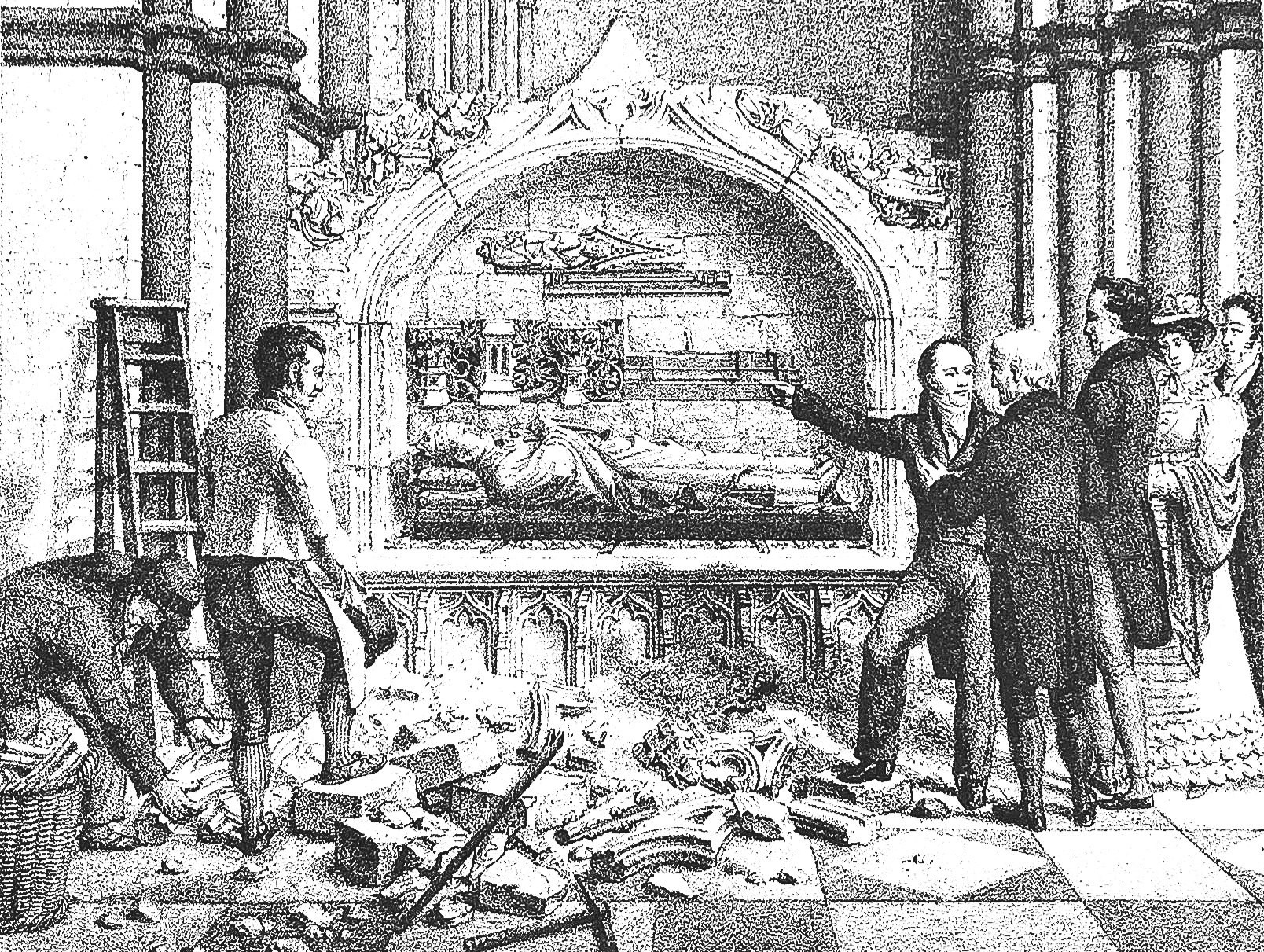
Discovery of the Bishop John de Sheppey chantry
14th century
December 20, 2021
The fragments discovered in the blocking of the tomb under Cottingham’s restoration works were interpreted at the time as likely to have originated in the chantry chapel recorded as being established by Sheppey after his death.
On the 10th July 1824, Bishop Sheppey's effigy and monument were discovered when moving the monument to Archdeacon Warner which stood directly against the inner wall that enclosed Bishop Sheppey's effigy (DRc/Acz 1, p. 68).
A series of correspondence and reciepts in the archives of the Dean & Chapter over the following few months documents the repainting of the effigy which had reportedly begun to fade on exposure to the air (DRc/FTv/18). The first repainting was considered innacurate by Cottingham and was repainted again at his insistence (DRc/Emf/135). A full investigation of the painted polychromy of the effigy is provided by Gary Gronnestad in his 2007 PhD thesis Medieval Polychromy and Victorian Good Intentions: Unravelling the Confusion Surrounding the Polychromy of the Fourteenth Century Effigy of John de Sheppey at Rochester Cathedral.
A note dated 15 January 1825 (DRc/Emf/135) states ‘it seems more than probable that Bishop Sheppheie was buried and his effigy fixed up in some other part of the Cathedral as the monument and chamber of the tomb where the effigy now lies are not of the character and style of sculpture according with those of the age in which he died. When the effigy was discovered, it was lying in a rather slanting direction upon two cross iron bars and upon the rubble with which the chamber of the tomb was filled’. Despite this, the effigy was fixed to the tomb base, the canopy restored and the tomb now known as that of Bishop Sheppey.

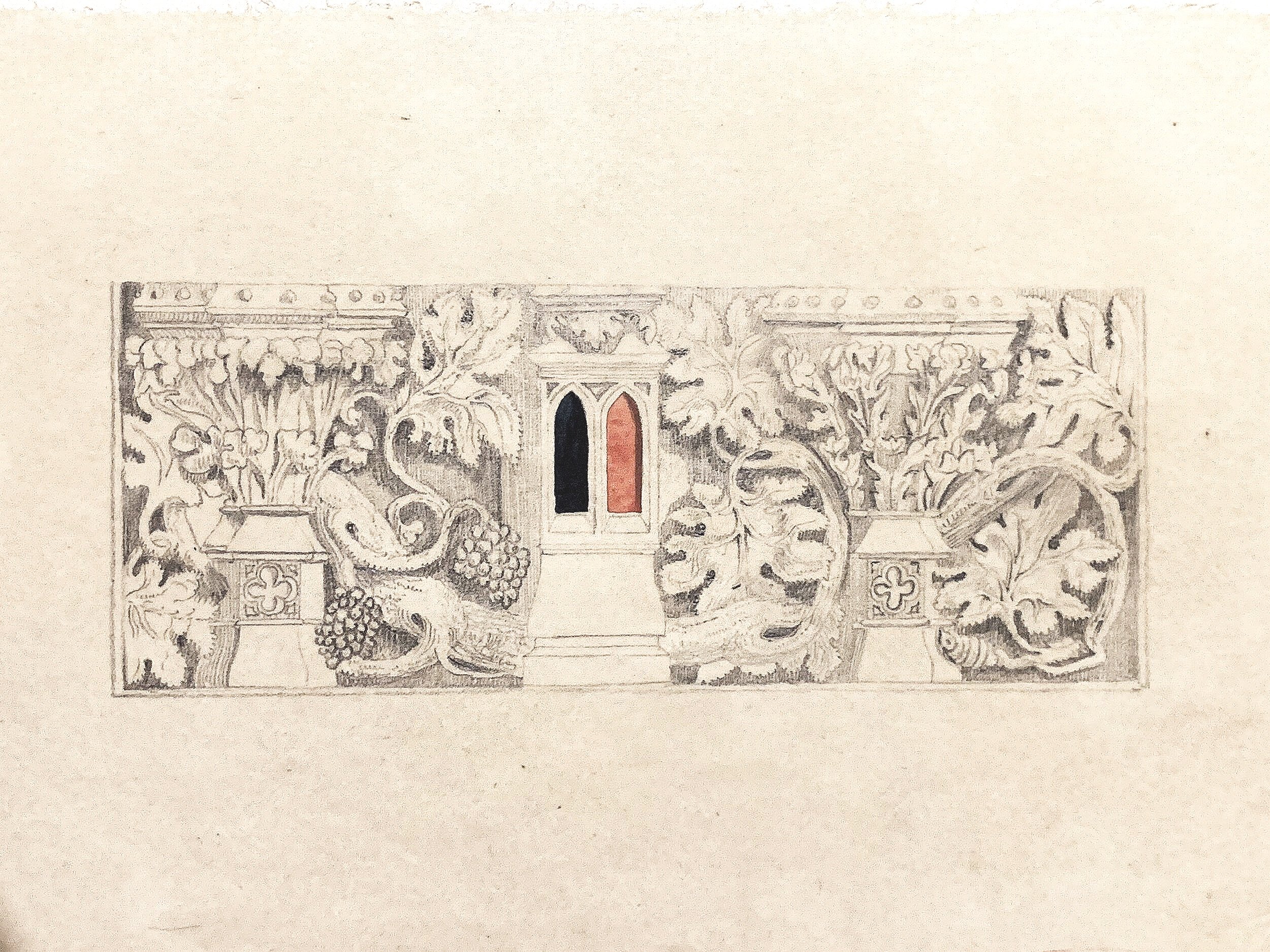
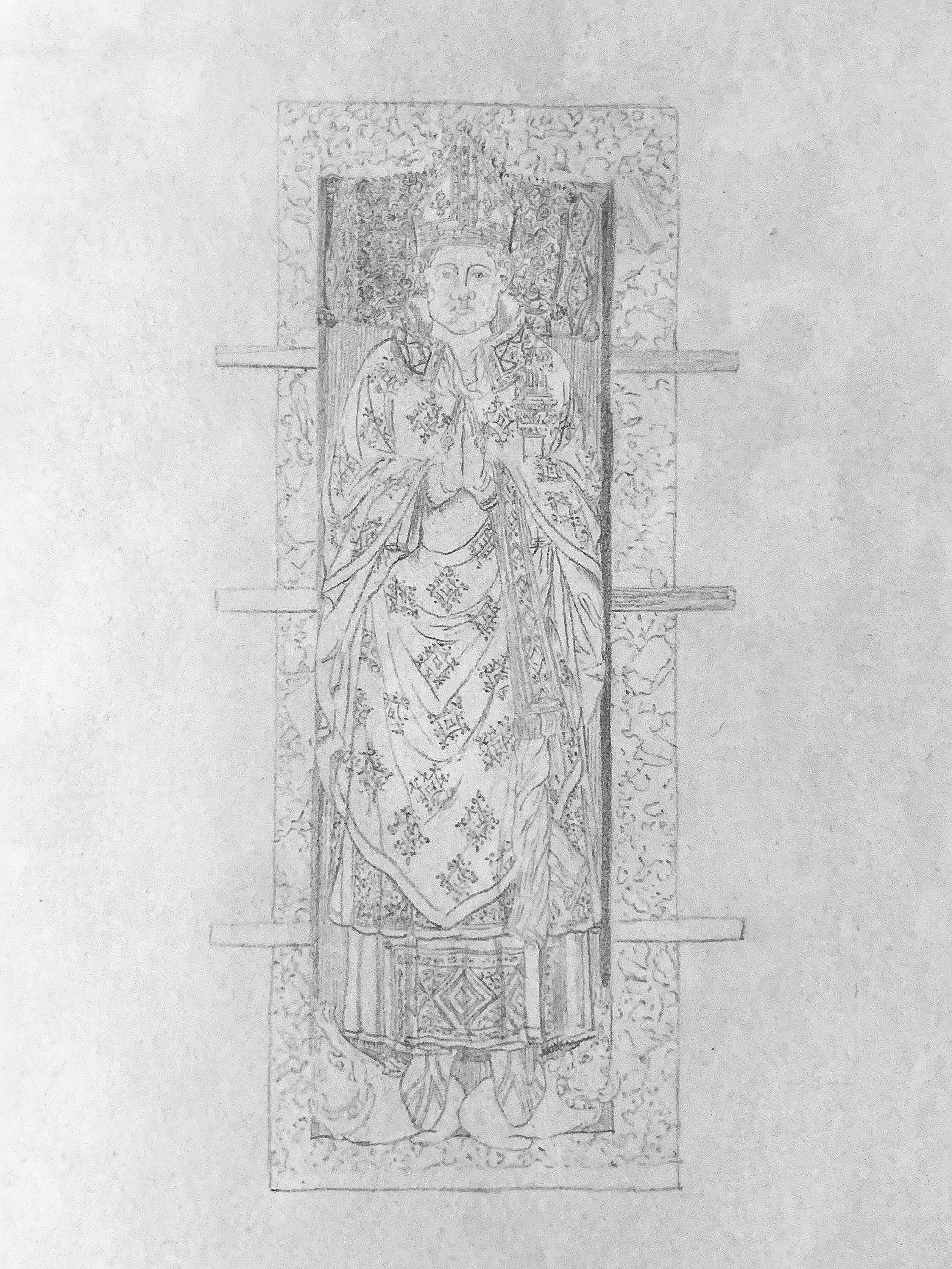
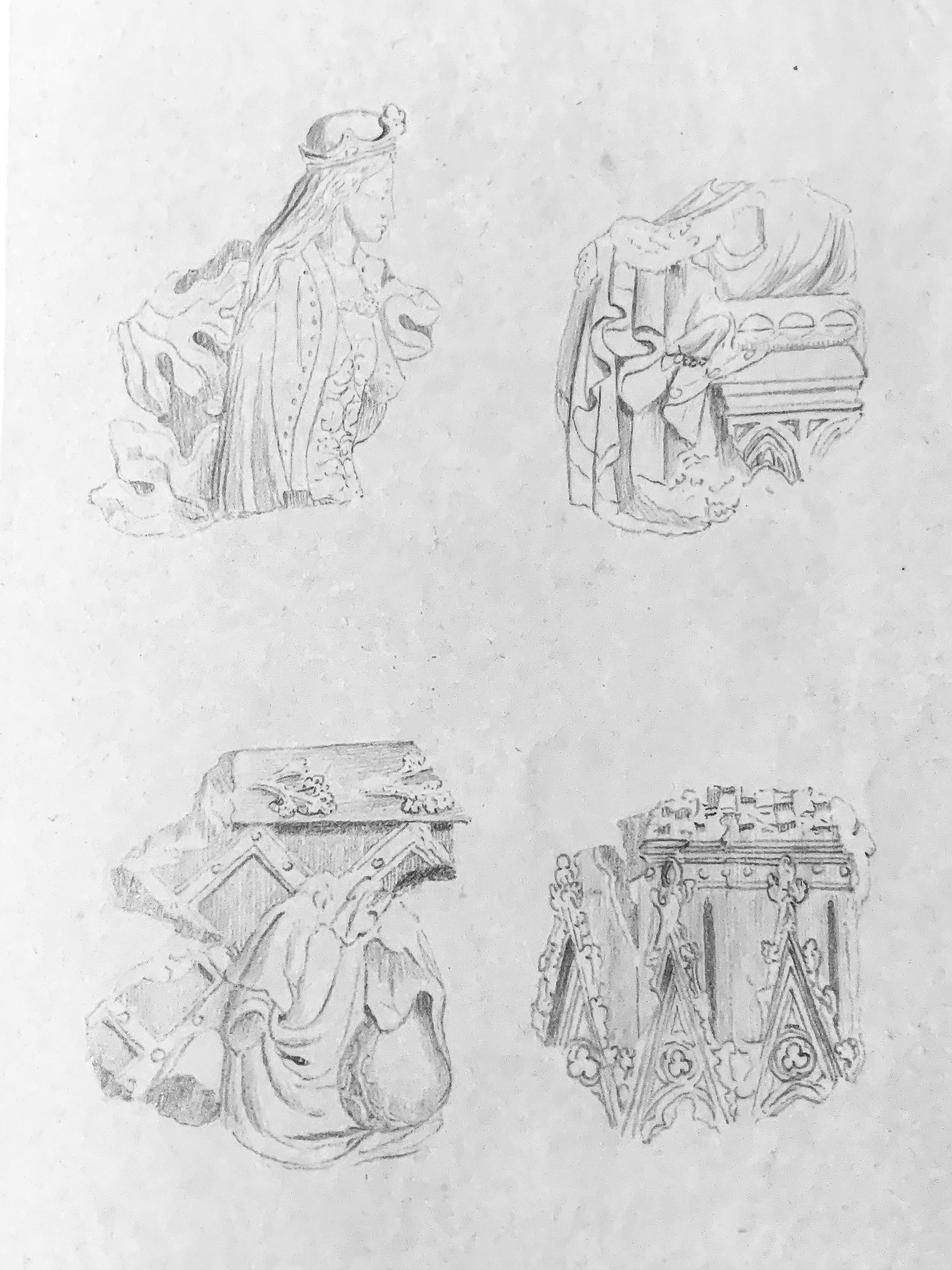
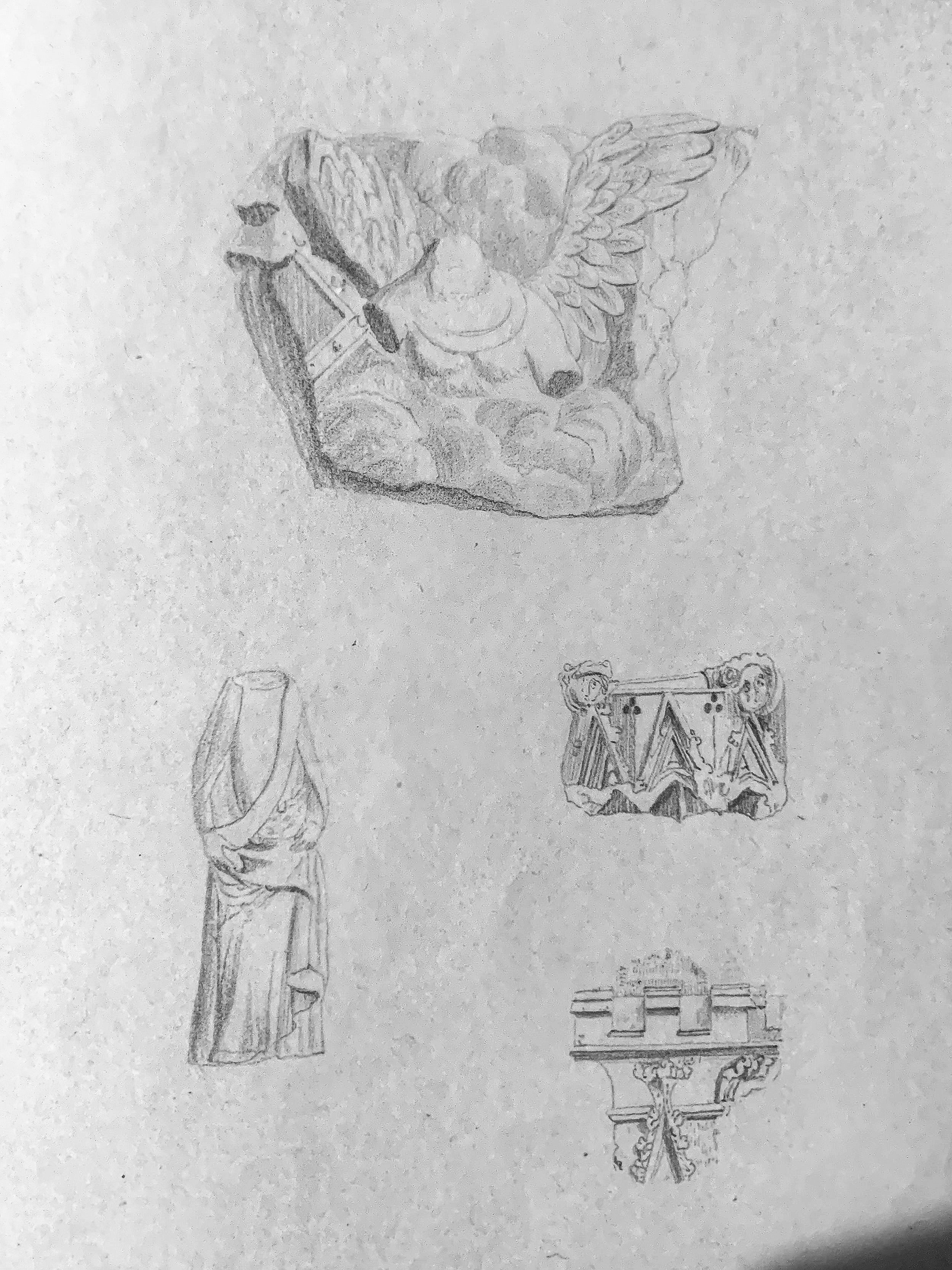
Sketches from the time of the discovery of the fragments. Lapidarium Portfolio, Rochester Cathedral Chapter Library.

Illustrations from a publication by Cottingham shortly after. Illustrations from a publication in 1825.
Four fragments in the Lapidarium collection today also belong to this assemblage, forming an architectural reredos with vertical elements.
Four fragments of a chantry chapel reredos, believed to have orignated in the mid-fourteenth-century chantry of Bishop John de Sheppey.
The large reredos portion features fine gilded acanthus-leaf decoration and three pedestals for horizontal portions. Possibly each featured a statuette like the centre.
The centre upright features a statue of Moses, although the horned head (resulting from a mistranlation of the hebew for ‘blessed’) has been lost since Cottingham’s drawings. Moses holds the tablet of ten commandments on which ‘MOY-SES’ is painted.
Clues in the shape of profiles and a narrow roll-moulding suggest the approximate location of the fragments. Angels apparently decorated another vertical portion. An expensive blue pigment colours portions of the roll moulding and areas behind wings corresponding to sky.
A fragment featuring vinescroll with another angel’s wing may belong to the upper horizontal portion of the assembly.
A further plain fragment of the roll-moulded vertical components of the screen was discovered buried in the crypt during excavations in 2014.
Two further fragments featuring very similiar acanthus-leaf relief decoration were discovered and recorded alongside the others. The dimensions of the fragments and their foliage decoration indicate they were of parts of another lower reredos-portion rather than the upright portions featuring slender statuettes.
The fragment featuring a crouching or crowned female figure depicted in movement has also lost its head, evident in the sketches commissioned by Cottingham. The figure is surely Ecclesia.
The second fragment is of a seated figure, the body of which has been broken but survives in the Lapidarium collection.
Jacob Scott
Research Guild








